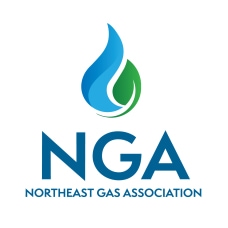PSMS Lessons Learned - Expect the Unexpected - May 2024
PSMS Lessons Learned – Expect the Unexpected – May 2024
Safety Assurance, Continuous Improvement and Unforeseen Variables
In the context of pipeline safety management, safety assurance requires continuous improvement efforts to mitigate risks and enhance safety. These activities should include attempts to identify unforeseen variables that could impact pipeline safety operations. Robust safety assurance and continuous improvement practices aim to address these variables by regularly evaluating standards, practices and procedures. This can be achieved by considering leading practices of industry peers, monitoring and analyzing operating data, learning from past incidents, and being proactive about adjusting processes and operations.
Description of Event:
An operating company maintenance crew arrived at a location to investigate a grade 2 leak indication. After identifying an existing drip structure as the probable leak source, the crew began to excavate and expose the drip. Upon further investigation, it was determined there was a thread leak at the bottom of a drip riser standpipe. A plan of action to replace the drip riser was formulated by the crew and the supervisor on site. A replacement riser was fabricated and the crew, geared-up in appropriate PPE, entered the excavation, and proceeded to replace the riser using live-gas procedures. Upon unscrewing the threaded riser, with the release of gas, a brief ignition occurred. The resulting ignition/fire caused the crew members to immediately evacuate the hole. After the situation was deemed safe, the crew members re-entered the hole, plugged the main and installed a new drip riser. No persons or property were injured or damaged.
Root Cause(s) and Contributing Factor(s):
Root Cause: The ignition was attributed to the drip pot filled with debris causing static discharge which led to ignition. The crew making the repair applied static suppression actions prior to starting the operation. It was determined that standards do not address static suppression techniques appropriate for this type of activity.
Contributing Factors:
- Static discharge of a gas/air combustible mixture resulted in ignition after the crew acted within the excavation.
- Identification and verification of isolation valves did not take place prior to the leak repair commencing as part of the pre-job brief.
- A hazard was created from the 60 PSIG blowing gas condition related to the repair of the scheduled Class 2 leak. The mitigation activity chosen to repair the leak introduced a greater degree of risk.
Key Corrective Actions:
- Enhance standards to account for static suppression related to blowing gas activities on steel pipelines to eliminate potential ignition sources. Standards did not provide enough guidance on static suppression with blowing gas activities on a steel pipeline. Specifically, it was identified that personnel “grounding themselves” was the last step prior to donning insulating gloves.
- Enhance operating procedures to include identifying isolation valves, ensuring they are accessible and clear.
- Consider other alternatives to enhance crew safety related to Grade 2 leak repair on H.P. standpipes.
Key Lessons Learned:
Every job introduces unique site-specific variables that require individual hazard assessments/consideration. Beware of “complacency creep” in day-to-day operations by simply applying O&M procedures to similar assets without considering job specific variables and “what if’s”. Expect the unexpected.


